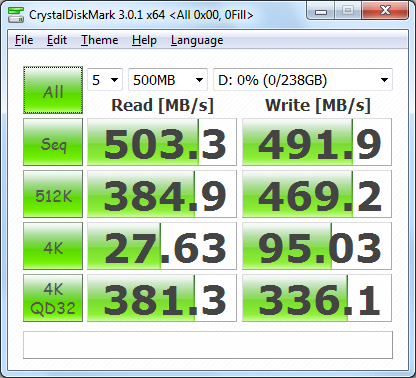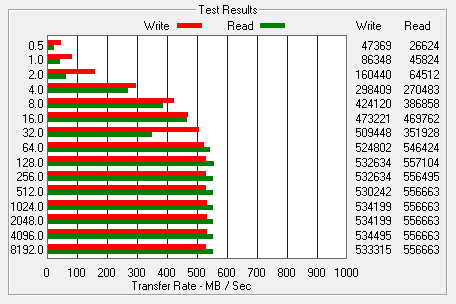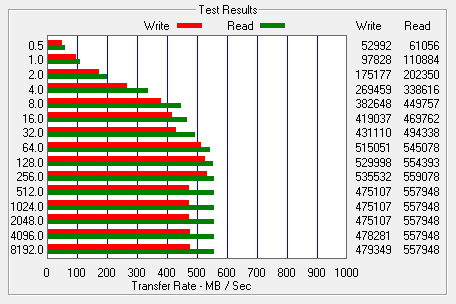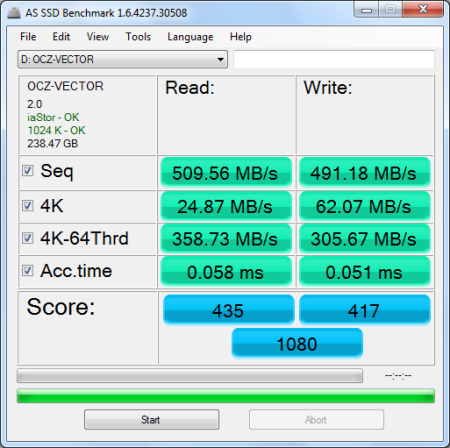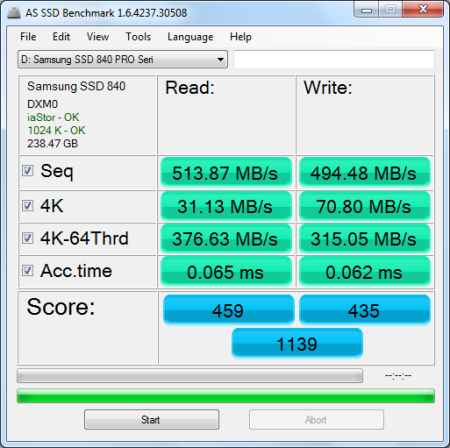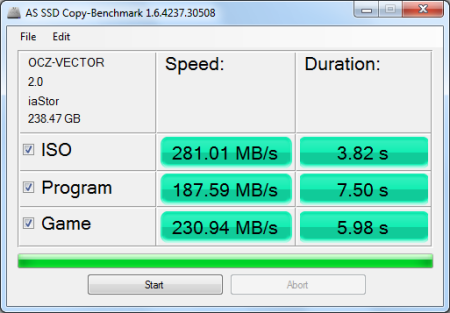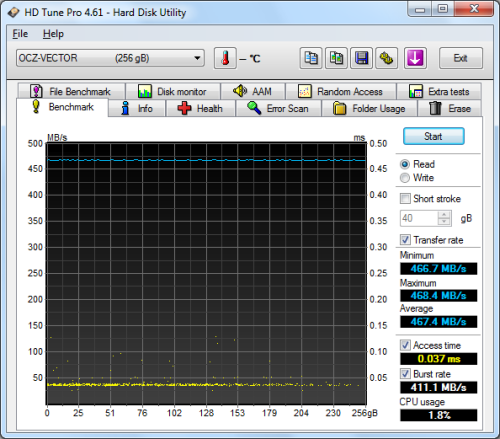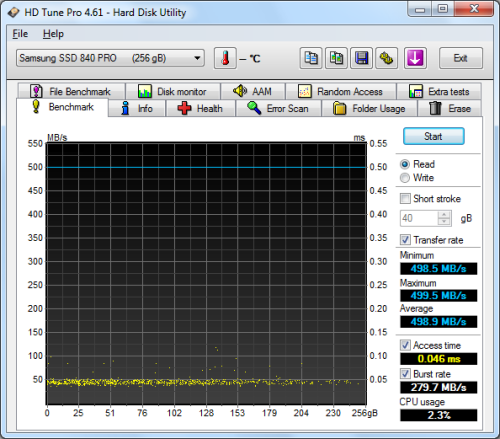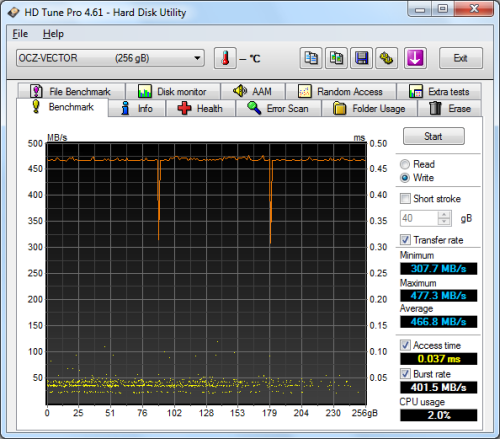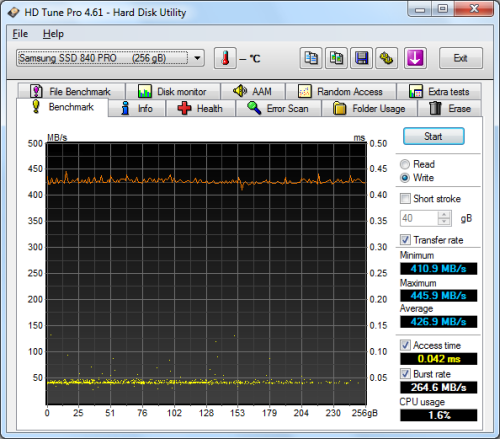

Model: OCZ Vector 256GB Solid State Drive
Manufacturer: OCZ Technology
Provided By: OCZ Technology
OCZ Technology is no stranger to the computer industry. Founded by enthusiasts, for enthusiasts, the company entered the memory market in 2002. Determined to manufacture the very best memory for overclockers, OCZ quickly established itself as a leader in the industry by breaking speed barriers and maintaining a reputation of quality. Today, OCZ continues to innovate. Along with their line of enthusiast-oriented power supplies, the company offers a wide range of high-performance SSD solutions for the enterprise and consumer markets.

The latest addition to OCZ's line of consumer-oriented solid state drives is the Vector. Available in capacities ranging from 128GB up to 512GB, the ultra-slim Vector is based on OCZ's new Indilinx Barefoot 3 controller. Developed entirely in-house, this cutting-edge controller is powered by both an ARM Cortex processor and OCZ's own Aragon co-processor and features an advanced, multi-level ECC engine, efficient garbage collection and adaptive flash management algorithms. The Vector is also equipped with 25nm synchronous MLC NAND and an extra large DRAM cache to deliver up to 550MB/s read and 530MB/s write speeds along with a maximum of 95,000 4KB random write IOPS.
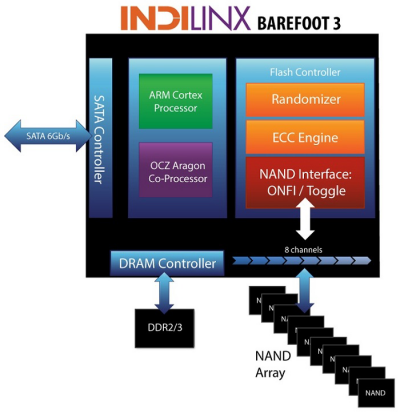
For this review, OCZ sent us the 256GB version of the Vector. This SSD comes equipped with 512MB of on-board cache and is capable of delivering up to 550MB/s sequential read and 530MB/s sequential write speeds as well as up to 100,000 random read and 95,000 random write IOPS.
| OCZ Vector 256GB Solid State Drive | |||||||||||||||||||||||||||||||||||||||||||
General Specifications
Performance
Reliability
Power Consumption
Environmental
Dimensions and Weight
Other Features
|
Needless to say, this is only a taste of what the Vector has to offer. To give you an idea of what to expect, we'll take a closer look at OCZ's new SSD and then see how well it performs. Does the Vector have what it takes? Can it deliver the performance we've come to expect from OCZ? Keep reading as we find out.
The Vector comes in a small, black and blue box. Along with a picture of the drive, the front advertises many of its key features including its 256GB capacity, SATA 6Gbps interface, Indilinx controller, MLC flash memory and TRIM support. The back of the box provides a bit more information regarding the Vector's features and capabilities. Inside, you'll find the SSD, a 3.5" adapter bracket, mounting screws, "I Love My SSD" sticker, installation guide and a small piece of paper with download instructions and serial number for Acronis True Image. For a limited time, Vector owners also get a free downloadable copy of the game Far Cry 3.

Physical Features:
The construction of the Vector is a marked improvement over OCZ's previous 2.5" SSDs. Instead of a mix of metal and plastic, the outer casing is made entirely out of aluminum and is covered by a great looking silver finish. The top of the drive also has a large, blue and gray sticker showing that it is part of OCZ's Vector series.

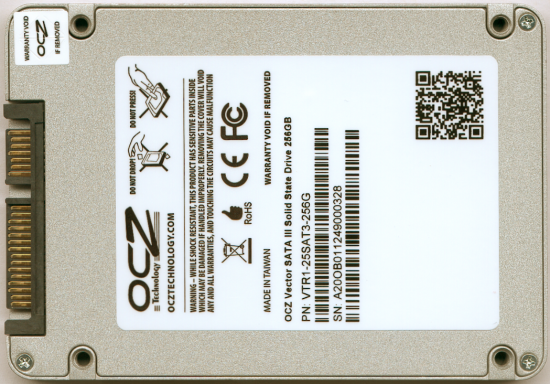
As I mentioned earlier, the Vector uses the Indilinx Barefoot 3 (IDX500M00-BC) controller chip. Designed entirely in-house, the Barefoot 3 is powered by an ARM Cortex processor as well as OCZ's own Aragon co-processor. At this point, the Vector is the only drive using the Barefoot 3 controller chip.


For the 256GB Vector, OCZ opted to use their own 16GB 25nm M2502128T048SX22 synchronous MLC NAND chips. Looking at the pictures above, you can see that there are eight of these chips on either side of the PCB. The drive also has two 256MB Micron 2DM77-D9PFJ DDR3 memory chips that are used for caching and garbage collection.
The test system used in this review was an HP 8200 Elite. The computer came equipped with an Intel Core i5-2400 CPU, 4GB of DDR3 1333MHz memory, Seagate Barracuda 7200.12 ST3250312AS 250GB SATA 6 Gb/s hard drive, NVIDIA Quadro FX580 512MB PCIe graphics card and an Intel 82579-LM gigabit network card. For the operating system, I installed a fresh copy of Windows 7 Enterprise.
To test the performance of the OCZ Vector 256GB, I ran a series of benchmarks using CrystalDiskMark 3.0.1, HD Tach RW 3.0.4.0, ATTO Disk Benchmark 2.46, AS SSD, HD Tune Pro 4.61, Anvil's Storage Utilities and Iometer. For comparison, I've also included test results from the Samsung SSD 840 Pro, Plextor PX-256M5Pro Xtreme, Samsung SSD 840, OCZ Vertex 4, OCZ Agility 4, SanDisk Ultra Plus, Kingston SSDNow V300, Kingston HyperX 3K and SanDisk Extreme.

The Vector is the first drive based on the Indilinx Barefoot 3 controller platform. Looking at the screenshot above, you can see that, unlike SandForce controllers, it performs equally well with both incompressible (0%) and compressible (100%) data.
CrystalDiskMark 3.0.1:
First, I ran a few quick tests using CrystalDiskMark. This benchmark tool measures the performance of a storage device by testing its sequential read and write speeds as well as its random read and write speeds using blocks 512K and 4K in size.
According to OCZ, the 256GB Vector is capable of reading at 550 MB/s and writing at 530 MB/s when connected to a SATA 6 Gb/s port. While the drive performed well, it came up a bit short of these numbers in CrystalDiskMark's sequential read and write speed tests.
The Vector performed equally well when using highly compressible 0x00 (0 Fill) data. This time around, the drive was able to read at 503.3 MB/s and write at 491.9 MB/s.
HD Tach RW 3.0.4.0:
Next, I used HD Tach to test the Vector's read, write and burst speeds as well as its seek times and CPU usage.

Looking at the screenshot above, you can see that the Vector had average read and write speeds of 337.5 MB/s and 305.7 MB/s respectively, as well as a burst speed of 385.1 MB/s.
ATTO Disk Benchmark 2.46:
I also used ATTO Disk Benchmark to test the Vector's sequential read and write speeds. The tests are run using blocks ranging in size from 0.5KB to 8192KB and the total length set to 256MB.
When tested with ATTO, the Vector's read speeds topped out at about 557 MB/s and its write speeds at 534 MB/s.
AS SSD:
AS SSD is a relatively new benchmark designed specifically for solid state drives. The application contains five synthetic tests used to determine the sequential and random read and write performance of a drive.
AS SSD also includes a copy benchmark. This test copies an ISO (two large files), program (many small files) and game (small and large files), returning the speed and duration of each.
HD Tune Pro 4.61:
Next, I ran a series of tests using HD Tune Pro. This hard disk utility measures a drive's performance by testing its sequential read and write speeds as well as its access time, burst rate and CPU usage. For this review, I'm also going to use it to benchmark the Vector's random read and write speeds, random access times and the number of operations per second.
The Vector performed very well when benchmarked with HD Tune. The drive had average read and write speeds of 467.4 MB/s and 466.8 MB/s, respectively, and a burst rate of 411.1 MB/s when reading
 OCZ Vector 256GB - HD Tune Random Access Read |
 Samsung SSD 840 Pro 256GB - HD Tune Random Access Read |
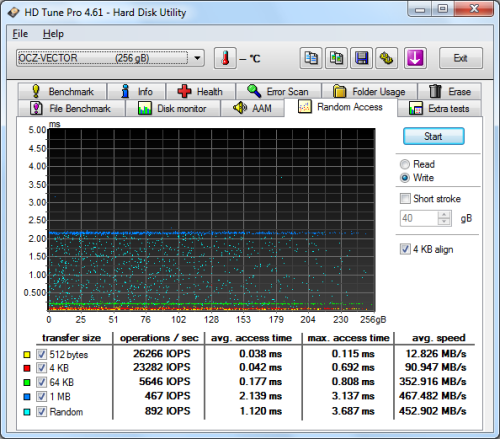 OCZ Vector 256GB - HD Tune Random Access Write |
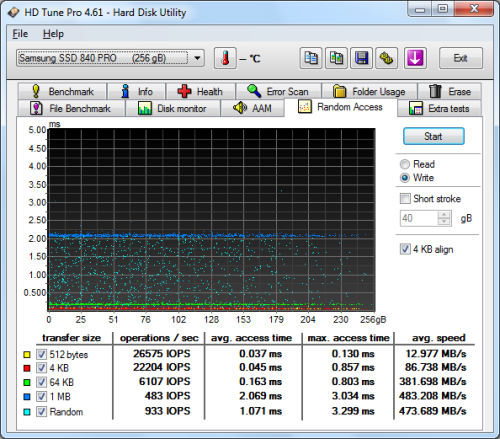 Samsung SSD 840 Pro 256GB - HD Tune Random Access Write |
The Vector didn't disappoint when doing random reads and writes. When writing 4KB blocks, the drive reached 23,282 IOPS and had an average speed of 90.947 MB/s. The Vector was even faster when reading, reaching 23,527 IOPS with an average speed of 91.905 MB/s.
Anvil's Storage Utilities:
Anvil's Storage Utilities is another new benchmark designed with SSDs in mind. The standard storage benchmark measures a drive's performance by testing its transfer speeds, access times and IOPS.

Iometer:
Lastly, I ran a series of tests using Iometer. This tool can be configured to benchmark a number of things. In this case, I used it to measure the Vector's read and write speeds and the number of operations per second. The tests were run using random bytes and a queue depth of 3.
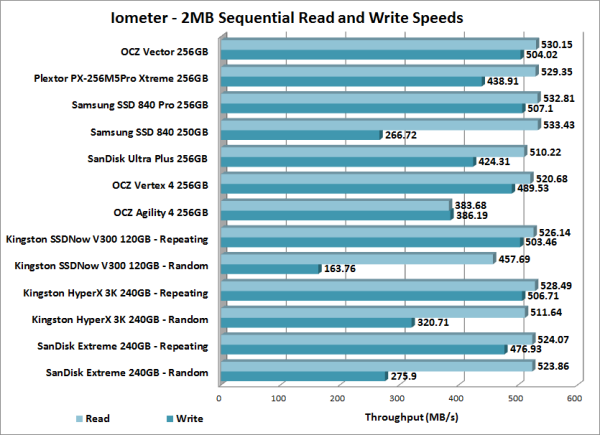
The Vector's performance was very similar to what we saw in our other tests. The drive was able to read at 530.15 MB/s and write at 504.02 MB/s.
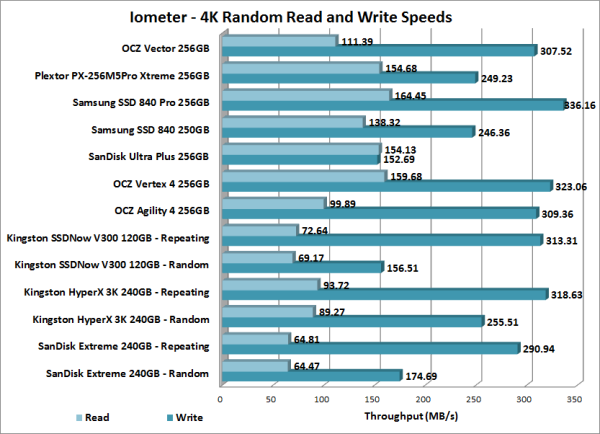
The Vector also performed pretty well when doing random reads and writes. In our tests, the drive was able to read at 111.39 MB/s and write at 307.52 MB/s.

According to OCZ, the 256GB Vector is capable of 100,000 IOPS when reading and 95,000 IOPS when writing 4K blocks. In our tests, the drive reached 28,517 random read IOPS and 78,725 random write IOPS. The only way I came close to OCZ's numbers was to increase the queue depth. With the queue depth set to 32, the Vector reached 94,104 random read IOPS and 83,820 random write IOPS.
TRIM Performance:
While SSD's offer many benefits, there are some downsides to using flash memory. One of the biggest issues people run into is performance degradation. Over time, an SSD will run out of fresh blocks and will have to write over data the file system has marked as deleted. This procedure is very complicated and can slow an SSD's write speeds considerably.
To fix this problem, most manufacturers have added TRIM support to their SSDs. The TRIM command allows an operating system, such as Windows 7, to tell an SSD which data blocks are no longer in use. Using this information, the drive pro-actively erases these blocks and adds them to the free block pool.
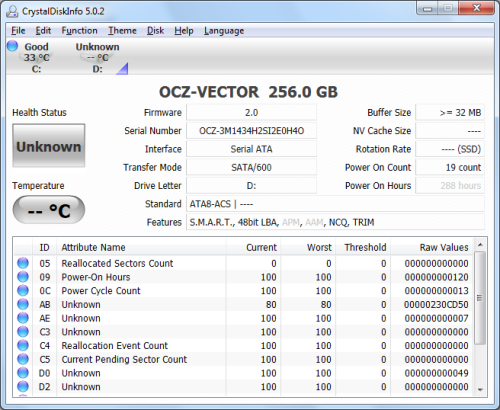
The Vector also uses a number of other flash management techniques including background garbage collection, dynamic and static wear-leveling and advanced flash defect management. Where flash defect management and wear leveling optimize the way data is written on the drive, garbage collection maintains "like new" performance by reorganizing data to maximize the number of free cells.
To test the Vector's TRIM and garbage collection functions, I first put the drive in a "dirty" state. I used Iometer to fill the entire drive and then ran a random write test for 30 minutes. Looking at the screenshot below, you can see that the Vector's average read and write speeds dropped to 324.3 MB/s and 81.8 MB/s, respectively.
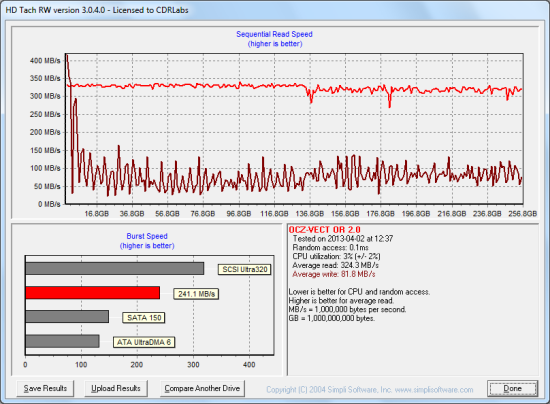
OCZ Vector - Dirty
The Vector's average write speed bounced back up to 393 MB/s within a matter of minutes. However, its average read speed dropped down to 281.9 MB/s while it was recovering.
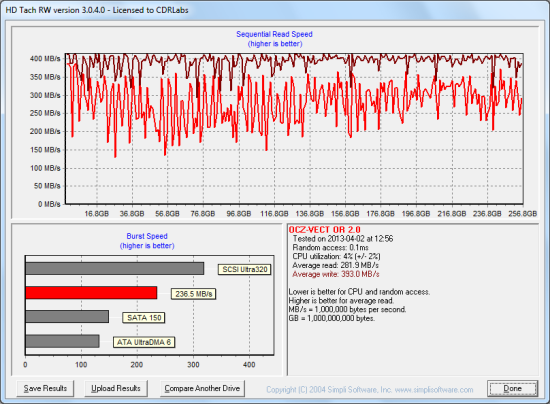
OCZ Vector - Recovering
I let the computer sit for about an hour and then reran the test. Looking at the screenshot below, you can see that the Vector's average read speed had increased to 368.3 MB/s.

OCZ Vector - After TRIM
Lastly, I used OCZ's Toolbox utility to perform a secure erase on the Vector. With the drive wiped clean, it had average read and write speeds of 392.4 MB/s and 412.6 MB/s, respectively.
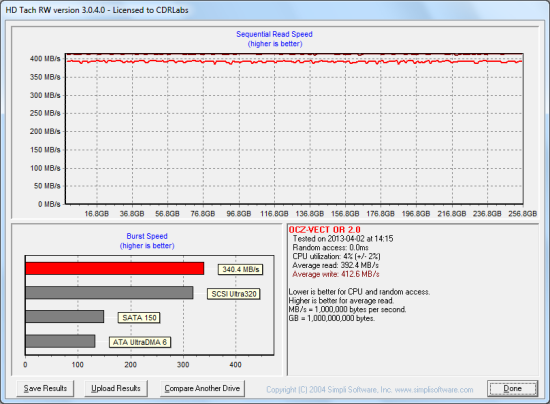
OCZ Vector - Secure Erased
Final Thoughts:
OCZ has knocked another one out of the park with its new Vector Series SSD. Powered by the company's own Indilinx-infused Barefoot 3 controller, the Vector combines synchronous MLC NAND with a massive cache to deliver some of the best all around performance we've seen. In our sequential read and write tests, the 256GB Vector was able to read at speeds as high as 557 MB/s and write at speeds in excess of 490 MB/s. The drive also did very well in our random write tests, producing more than 78,000 IOPS at low queue depths. Moreover, it performed equally well with compressible and incompressible data and was able to sustain these speeds, even after intensive use.
Aside from the lack of hardware based encryption, the only real issue I have with the Vector is its price. Currently, prices on Amazon range from $140 up to $529, making the Vector more expensive than both the Plextor M5Pro Xtreme and Samsung SSD 840 Pro. Given, OCZ recently sweetened the pot by offering a free, downloadable copy of the game Far Cry 3, but the Vector's premium price tag is still a hard pill to swallow, especially if you're not a gamer.

Highs:
- Available in 128GB, 256GB and 512GB capacities
- Excellent sequential read and write speeds
- Good random read and write performance
- Performs equally well with compressible and incompressible data
- Good looking, ultra-slim design
- SATA 6Gb/s interface
- Synchronous NAND flash
- Large DRAM cache
- Supports TRIM and idle background garbage collection
- Includes a 2.5" to 3.5" adapter bracket
- Includes Acronis True Image cloning software
- 5 year warranty
Lows:
- Pricey
- Does not support hardware based encryption




